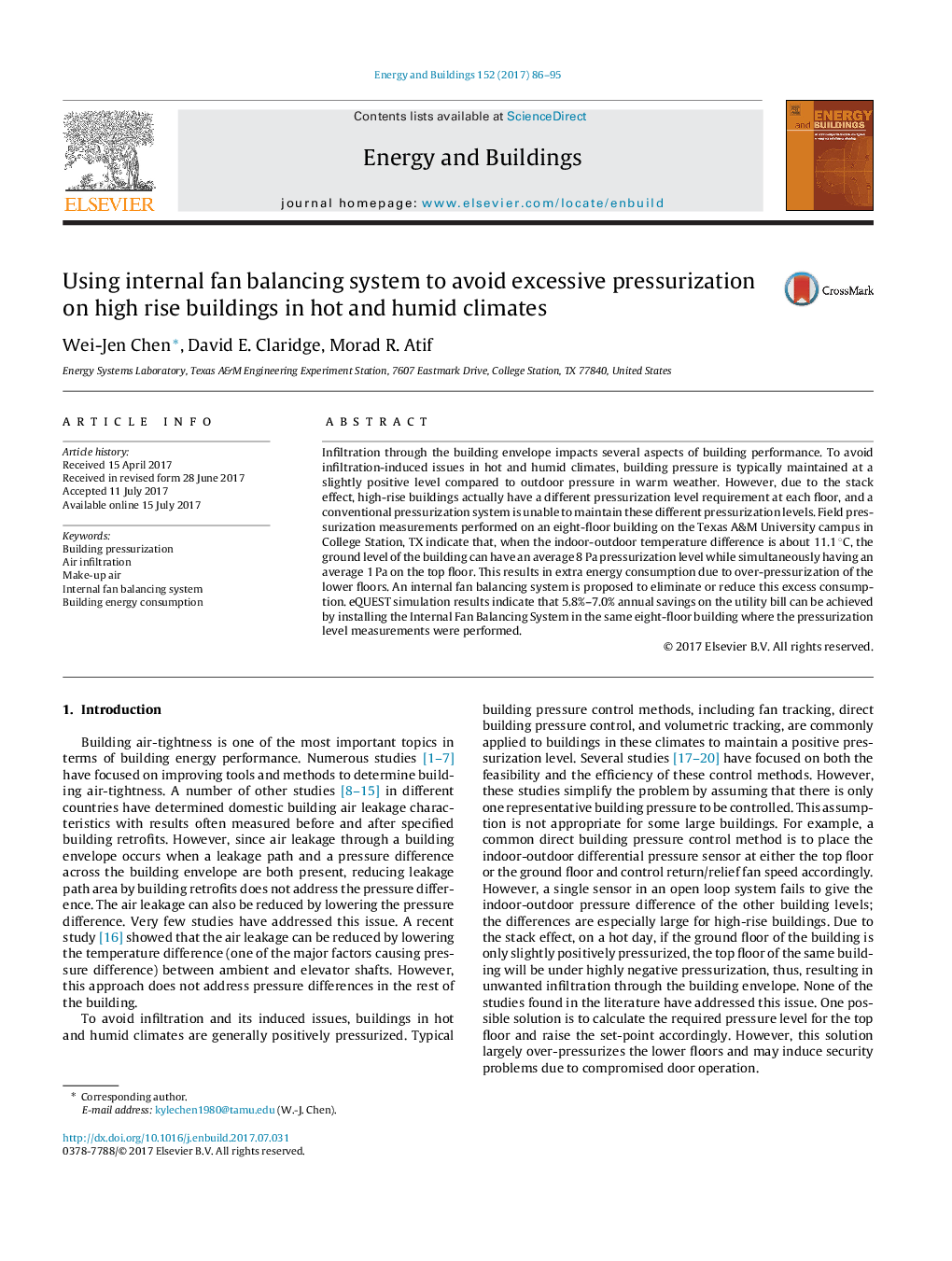| Article ID | Journal | Published Year | Pages | File Type |
|---|---|---|---|---|
| 4918897 | Energy and Buildings | 2017 | 10 Pages |
Abstract
Infiltration through the building envelope impacts several aspects of building performance. To avoid infiltration-induced issues in hot and humid climates, building pressure is typically maintained at a slightly positive level compared to outdoor pressure in warm weather. However, due to the stack effect, high-rise buildings actually have a different pressurization level requirement at each floor, and a conventional pressurization system is unable to maintain these different pressurization levels. Field pressurization measurements performed on an eight-floor building on the Texas A&M University campus in College Station, TX indicate that, when the indoor-outdoor temperature difference is about 11.1 °C, the ground level of the building can have an average 8 Pa pressurization level while simultaneously having an average 1 Pa on the top floor. This results in extra energy consumption due to over-pressurization of the lower floors. An internal fan balancing system is proposed to eliminate or reduce this excess consumption. eQUEST simulation results indicate that 5.8%-7.0% annual savings on the utility bill can be achieved by installing the Internal Fan Balancing System in the same eight-floor building where the pressurization level measurements were performed.
Related Topics
Physical Sciences and Engineering
Energy
Renewable Energy, Sustainability and the Environment
Authors
Wei-Jen Chen, David E. Claridge, Morad R. Atif,
